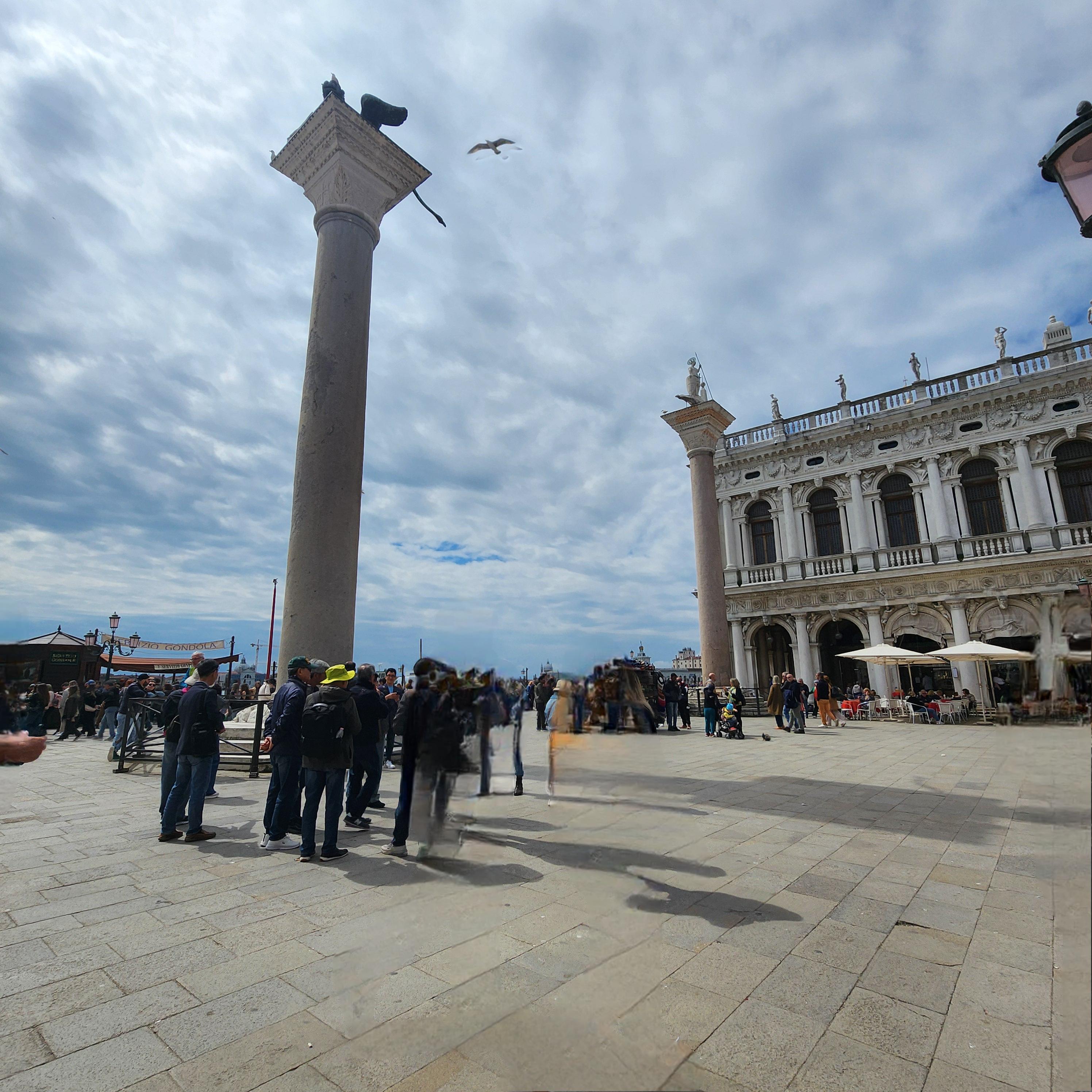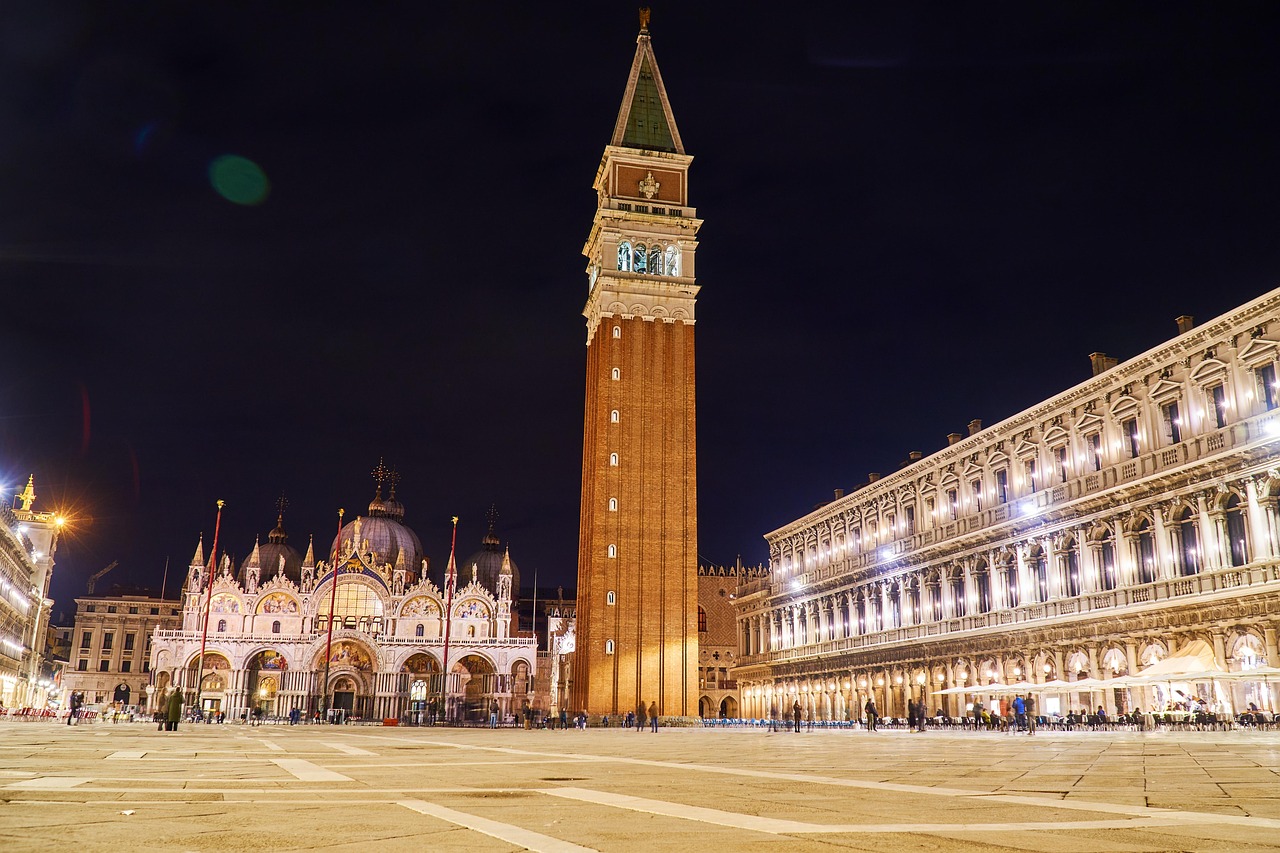About St. Mark's Campanile and Piazzetta Columns
St. Mark’s Campanile, a 99m tall bell tower in Venice, was originally built in the 9th century and rebuilt after its dramatic collapse in 1902.
Architectural Design and Purpose
Constructed of red brick and topped with a pyramidal spire, St. Mark’s Campanile once served as both a watchtower and a lighthouse. Its belfry houses five bells, each with a distinct role—from signalling work hours to announcing official executions.
A Golden Guardian Above
Crowning the Campanile is a golden statue of Archangel Gabriel, which also functions as a weathervane. Visible across Venice, the statue not only adds grandeur but symbolizes divine protection over the city and the iconic square below.
The Piazzetta Columns: A Ceremonial Threshold
At the tower’s base lie the Piazzetta Columns—San Marco and San Teodoro—installed in the 12th century. The columns mark the symbolic gateway to Venice. Historically used for public executions, the space between them is still avoided by superstitious locals.
- In the past, foreign dignitaries were rarely allowed up the Campanile, as Venetian rulers feared they might spy on the city’s defences.
- In 1609, Galileo Galilei demonstrated his telescope from the Campanile to the Doge; a plaque now marks the spot.
- The Column of St. Mark is crowned with the winged lion, while the Column of St. Theodore shows the city’s earlier patron saint standing over a slain dragon.



.jpg)


